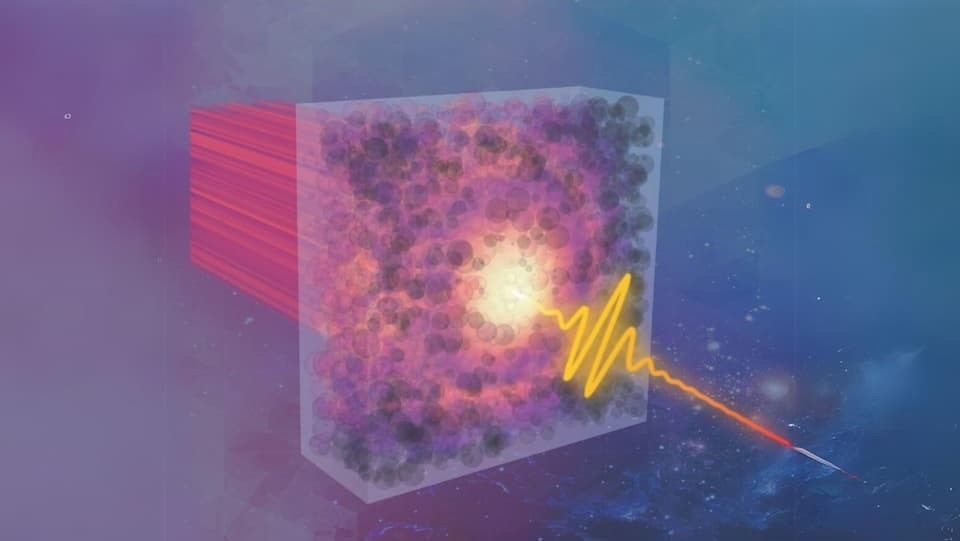As part of the European Union ERC project TIMING, a team, including members of Loughborough’s Emergent Photonics Research Centre in collaboration with Prof Jacopo Bertolotti from Exeter University, has developed a new technique that enables precise spatiotemporal control of terahertz waves as they pass through disordered materials.

Image Credit: Loughborough University
The method, published in ACS Photonics, could lead to advances in medical imaging, communications, and other applications that rely on broadband terahertz pulses.
In the realm of optics, the traditional view has long seen disordered systems - like looking through frosted glass - as a limit to clarity. Much like how fog, a disordered distribution of water particles, scatters light and blurs our vision, these materials scatter light in unpredictable ways. But this new study shows we can harness this scattering to our advantage. A more modern approach which depicts those objects as “Complex media” reveals a strikingly different narrative. The key lies in understanding that while the information is indeed scrambled within these systems, it is not irretrievably lost and that this scrambling can be used to manipulate light itself.
Terahertz waves are a form of electromagnetic radiation of wavelength lying between microwaves and infrared light. They represent the bridge between electronics and photonics, which makes them remarkably difficult to generate detect and manipulate. Yet they are highly sought after and unique as terahertz waves can penetrate materials like clothing, paper, and plastic, offering clear images without the ionising damage of X-rays, and they can carry exceptionally high-performance communication links. However, terahertz waves become distorted as they propagate through complex structures like some biological tissue or technological structures. In fact, imaging through complex media is a challenge, but also an opportunity.
In this study, the researchers used a special kind of ultrafast laser, known for its extremely short pulses, to create patterns of terahertz pulses (of duration of a few picoseconds). As those patterns interacted with complex scattering material, the researchers manipulated the laser's illumination by employing a specially designed genetic algorithm which mimics the process of natural evolution to solve complex problems. As a result, they gained control over the way terahertz waves distribute in space and evolve in time after material. In a way, this level of control recomposes pieces of the wave scrambled by the scattering, in a new form with desired patterns and colours.
“It is remarkable that complex media operate as sophisticated devices that manipulate terahertz waves in ways out-of-reach in the art, and yet they are actually very accessible random assembly of particles" said Dr Vittorio Cecconi, lead researcher of the study. He continues: "This opens up new possibilities for exploiting terahertz waves in imaging and sensing applications where scattering is an issue."
While this approach has multi-disciplinary ramifications, at terahertz, it is enabled by the availability of methods to measure the evolution of the terahertz electric field in times, in ways that resemble the function of an oscilloscope. Yet in photonics, this is very uncommon as the electric field (the quantity that oscillates in electromagnetic waves) is not generally measurable for light, where the commonly accessed quantity through photodetector is the intensity. This specific difference enables a methodology known as Nonlinear Ghost Imaging design to gain space-time information on waves and the way they interact with optical materials.
“The synergy between Nonlinear Ghost Imaging and complex media enabled this research and unlocks several potential advanced applications, like terahertz computing,” Dr Cecconi said.
Prof Peccianti, director of the Centre and Principal Investigator of the ERC project TIMING, emphasized the Centre's mission, stating: “At the Emergent Photonics Research Centre, our core ethos is to explore the intersection between ultrafast photonics and complexity. Here, light transcends its traditional role as mere illumination, evolving into a powerful tool capable of instantaneously capturing and processing a vast amount of information – marking the route of a new technological innovation."